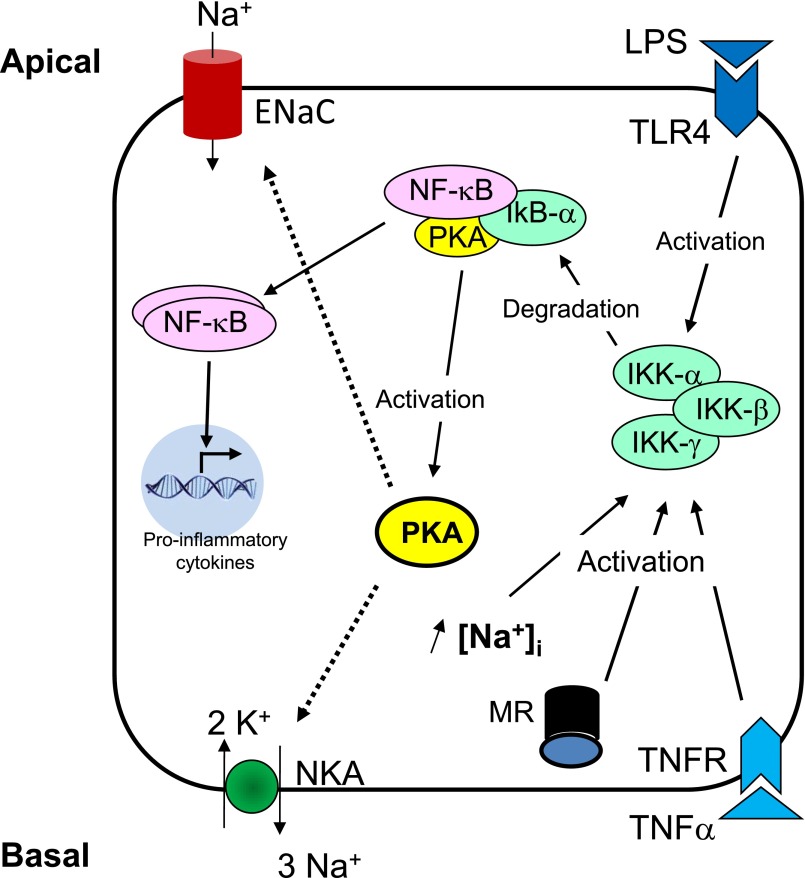Figure 4.
Control of sodium transport by intracellular sodium in CD principal cells. The proinflammatory NF-κB pathway can be classically activated by bacterial products such as LPS via activation of Toll-like receptor 4 (TLR4) located in the apical membrane, by cytokines such as TNFα that binds to basolateral receptors, or by aldosterone via mineralocorticoid receptors. Activation of NF-κB through the classic pathway requires activation of IKKβ that phosphorylates IκBα that indices its dissociation from p65 NF-κB and its degradation by the proteasome. After dissociation from IκBα, NF-κB complexes are translocated to the nucleus where they modulate transcription of target genes including proinflammatory cytokines. Increased intracellular Na+ concentration induces dissociation of a protein complex containing IκBα, p65 NF-κB subunit and PKAc. This cascade leads to PKA activation and increased cell surface expression and activity of Na+,K+-ATPase.

